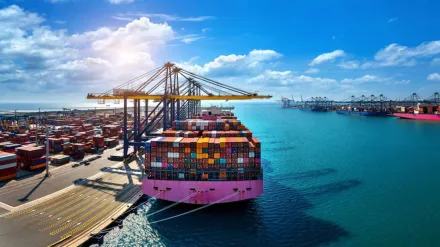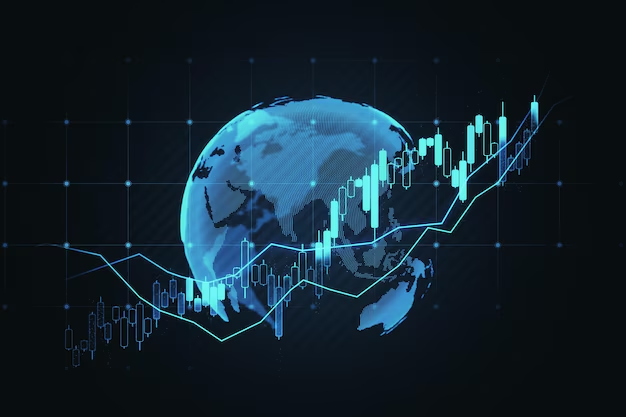What Investors Can Learn from Recent Russia-Ukraine Developments?

Russia-Ukraine conflict impact continues to shape and reshape global markets time and again since its war escalated and became the talking point in 2022. The Russian infiltration deep within the Ukraine border ultimately resulted in the imposition of sanctions by the US. The war and trade embargo on Russia played a major role in shooting energy prices, forcing shifts in equity portfolios, and continuing volatility in the currency markets. The market volatility caused by Russia-Ukraine peace talks advocated by US President Donald Trump made a large section of the investors hopeful about the possible relief from the war implications on the market for a short time.
While the news about the peace talks has already sent feeble signals about easing the market tension, for investors, navigating the uncertainty is of more critical importance than ever before. If war-impacted supply chain curtailment and changing geopolitical alliances have remained key market constraints ever since the start of the Ukraine-Russia war, the recent announcement from the Trump administration about the peace talk initiative brought some hope for the de-escalation of global economy war impact.
Here in this blog, we are going to explore several geopolitical investing strategies and how investors can align their investment strategies to reduce risks and make the most of favorable price movements.
Learning About Volatility and Diversification in the Energy Market

If we need to talk about one major and immediate impact of the Ukraine-Russia conflict, it is the disruption of the energy market. Russia, as the global leader in oil and gas supplies, immediately faced disruption in its exports. The impact was compounded by the increasing vulnerabilities experienced by the Ukrainian infrastructure. Now, as soon as the news about peace talks is in the air, we are experiencing movement around oil prices. Let’s go further deeper into the key investor lessons from war between Russia and Ukraine, the constituent factors and their implications.
-
The Impact of Curtailed Supply: In the beginning of 2024, for a temporary period, we experienced a spike in the oil prices due to the U.S. and Russian supply cuts. The price of Brent Crude Oil at that time was rising 4% every week. While the demand fundamentals were strong, the geopolitical crisis could easily override this strength. The scenario created short-term opportunities for traders.
-
Uncertainty Infused by Peace Talk: On the other hand, there were also some reports about possible peace talks. The news triggered a steady decline in oil prices in March 2024. The volatility of oil prices has been the result of widespread expectations of normalized Russian oil and gas exports.
-
Long-Term Outlook: According to many experts, even a successful peace deal may not be enough for Europe to take recourse to buying Russian gas. This was evident when many Western European countries, including Germany, started investing in LNG terminals and green energy to reduce the dependence on Russia for their energy supplies.
Time and again, the exposure of energy markets to geopolitical risk appears to be a driving factor for trading moves. One major learning from this is to diversify different energy sources, such as fossil fuels, renewables, and grid technologies, to minimize the impact of geopolitical crises. To make the most of such uncertainty, investors should also leverage options to hedge price swings.
Emergence of European Equities as the Safe Haven

When the Ukraine-Russia conflict came fresh from the oven, the old and complex relations between stock market and war once again came before us. The European equity market instantly felt the heat, as the entire continent traditionally has been dependent on Russian energy. But here are recent trends that evoke our optimism. As the initial heat around the war situation died down and most countries found their alternatives and new adjustments for sustained energy supply, European stocks have emerged as the haven for investment opportunities for many investors. Here are some factors that made this shift possible.
-
Cyclical sectors, where growth has been halted only temporarily, served as the best bets. Sectors like automotive, manufacturing, and tourism are always likely to rebound to their earlier positions as soon as there is a credible peace process and stabilization of energy costs. On the other hand, the crisis pushed the interest rates higher, clearly benefiting European banks.
-
Just on the opposite side, stocks that temporarily show growth during the crisis may lose their value once investor confidence in the market is back, and they seek growth. A fruitful peace talk and consequent market boost will only help uplift the Eurozone GDP, as predicted by many financial analysts. The GDP growth will only result in favorable market sentiment and investment growth in the cyclical sectors.
In such a scenario, what should investors do? Well, the investment risks war brings around can make it necessary to rebalance their portfolios to keep undervalued stocks from the European cyclical sector and wait for the easing of geopolitical tensions and market rebound to take place.
Risk Sentiments Showcased through Currency Movements
The twists and turns in the conflict continued to create ramifications in the market. The almost collapsing Russian ruble and the immediate slump of the euro that we have seen in 2022 give us a clear idea of the fragile forex market under geopolitical crises. Let’s try to understand the dynamics even more deeply.
-
According to the estimates of JPMorgan, a credible and smooth peace process can boost the euro and Eastern European currency rates.
-
As an immediate side effect of the peace process scenario, there can be the consistent weakening of the U.S. dollar, since there will be a clear boost for European cyclical sectors.
The investors need to grab the price movement opportunities in undervalued European currencies. To keep things safe and balanced, investors also need to maintain dollar hedges.
The Shifting Focus from Oil to Agriculture and Metals

The Russia-Ukraine war mostly allowed the energy sector to dominate headlines. But the conflict also had a disruptive impact on agriculture and metals. Given the fact that Ukraine is one of the top grain exporters in the world and Russia is a top supplier of nickel and palladium, the risks in financial markets from the global conflict are far-reaching and it is particularly true for the commodity and energy markets. Some of the recent updates from the commodity market that followed this crisis include the following:.
-
The potential peace talks can help stabilize the prices of wheat and fertilizers and ease the inflation of food prices. But given the nature of geopolitical tension in this part of the globe, the long-term risks corresponding to Agricultural commodities are not fading away anytime soon.
-
Following the crisis, there has been a large-scale realignment of the metal market supply chain. The biggest example of this is how the major automakers are already looking for alternatives for Russian metals. No wonder, both Canadian nickel and Australian lithium have emerged as two important alternatives.
-
The volatile market condition prompted many investors to choose Gold as the safe-haven investment option against risk-prone assets.
In such a scenario, what investors in the commodity market should choose is the resilience of the supply chain. Any commodity coming from a stable region with established and time-tested supply chain channels is likely to deliver far better market results.
Geopolitical Scenario Planning to Manage Risk
As an investor, you must stay tuned to the trends and emerging geopolitical scenarios to address the risk factors well in advance. Underestimating a crisis scenario can have disastrous consequences for the investors. The two important lessons that investors should take from this emerging crisis include the following.
-
Investors must take into account the extended normalization time due to the slow pace of the process. Even after the normalization, some sanctions can continue, and territorial disputes can fuel tension intermittently from time to time. This is why the investors need to model several different scenarios.
-
The other major aspect that investors should keep an eye on is how U.S.-Russia relations play out following the peace process. A possible Trump-Putin dialogue, for example, can change the sanction policies, resulting in a boost of energy and defense stock pricing.
The assessment of geopolitical risks for creating a portfolio is a fundamental skill requirement for any investor. In the current scenario, this skill is more sought-after than ever before.
Ending Notes
The Russia-Ukraine conflict allowed investors to reconsider investment safeguards and opportunities in a new way. Some of the key strategies that have emerged to offer the best safeguards against volatility created by geopolitical crises include diversification across assets, focusing on undervalued equities, choosing commodities based on supply chain resilience, and leveraging hedge funding options to control volatile oil prices. Which strategy will work best entirely depends on the asset class and the corresponding market impact.




